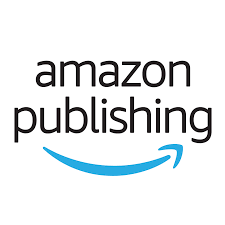In the rapidly growing world of self-publishing, picking the appropriate platform is a crucial choice that will have a big impact on your book’s success. Amazon is a massive option among many, but how does it stack up against other self-publishing platforms? This in-depth article explores the benefits and distinctive characteristics of self-publishing on Amazon and contrasts it with other prominent platforms to assist you in making an informed choice about where to publish your literary work.
Recognizing the Self-Publishing Environment on Amazon
Publish Yourself on Amazon:
Before we compare, let’s examine why self-publishing on Amazon has grown to be the preferred option for writers all around the world. With its user-friendly interface, extensive worldwide distribution, and affordable royalty rates, Amazon’s Kindle Direct Publishing (KDP) is a compelling choice for both seasoned authors and those just entering the self-publishing field.
Examining Amazon Kindle Direct Publishing (KDP) in More Detail
Benefits of Amazon Self-Publishing:
Global Reach: Your book can be accessed by a large number of people worldwide thanks to Amazon’s tremendous reach.
User-Friendly Interface: Self-publishing is made easier and more accessible for writers of all skill levels by KDP’s user-friendly platform.
Enrolling in Kindle Unlimited (KU) might potentially increase your book’s visibility and earnings by exposing it to a broad pool of subscribers.
Drawbacks of Amazon Self-Publishing:
Exclusive Contract: To be eligible for KU, your book must be exclusive, which means it cannot be found on any other platform.
Other Prominent Self-Publishing Websites: A Comparative Study
Smashwords: Advantages: Provides distribution to several stores outside of Amazon, giving it a wider audience.
Cons: varying platforms may have varying royalties, and formatting requirements may be more complicated.
- Draft2Digital: Pros: Makes distribution easier and enables authors to reach a variety of stores without requiring a lot of formatting.
Cons: Service charges could reduce total revenue.
- Apple Books: Benefits include easy integration into Apple’s ecosystem and access to a sizable and devoted customer base.
Cons: More complicated review procedure and stricter content rules.
- Barnes & Noble Press: Benefits include print-on-demand choices and direct access to the Barnes & Noble readership.
Cons: Market share is lower than that of Amazon.
Crucial Things Self-Publishers Should Know
- Royalties and Pricing: It’s important to comprehend each platform’s royalty and pricing alternatives. Although Amazon KDP pays competitive royalties, the structures on other sites could differ.
- Distribution Channels: Think about the places you would like to sell your book. Despite its large market share, Amazon may not have access to a wide range of audiences or niche markets on other platforms.
- Exclusive vs. Wide Distribution: Choose between signing up for exclusive services like Kindle Unlimited and choosing wide distribution over a number of platforms. This decision may affect how well-known and profitable your book is.
- Formatting Requirements: Formatting specifications can differ between platforms. Comprehending and adhering to these standards is essential for a seamless publication procedure.
- Marketing and Promotion: Examine the tools that each platform provides for marketing and promotion. While some might offer extensive marketing opportunities, others would place more of an emphasis on the author’s own initiatives.
- Print-On-Demand Services: If you would like your book to be published in hard copy, you should look into print-on-demand services providers like Barnes & Noble Press and Amazon KDP.
In summary: Getting Around the Self-Publishing Scene
Selecting the best self-publishing platform is a crucial choice that will influence how well your book sells. Although Amazon KDP is the industry leader, other platforms have distinct benefits and target different demographics. When starting your self-publishing adventure, weigh the benefits and drawbacks of each platform and match them to your objectives and the genre of your book. Knowing the advantages and disadvantages of each platform will enable you to make well-informed decisions that support your goals for self-published works. Cheers to your successful publication!





